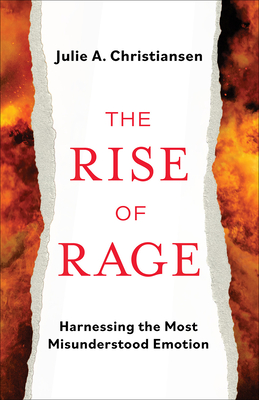Book Review: The Rise of Rage: Harnessing the Most Misunderstood Emotion
by Julie A. Christiansen
Broadleaf Books (Feb 13, 2024)
Nonfiction, Hardcover, 237 pages
More Info ▶
Book Reviewed by Robert Fleming
During these current chaotic times, the current surge of subway crime in major cities, road rage on streets and highways, and mass shootings across the country has created a flood of publications concerning the subject of handling emotions of anger and rage. One of the better books to find its way into print is the well-documented work The Rise of Rage: Harnessing the Most Misunderstood Emotion by esteemed psychotherapist Julie A. Christiansen, author of Anger Solutions: Proven Strategies for Effectively Resolving Anger and Taking Control of Your Emotions. While she shows anger and rage can often be pivotal for change and progress, there exists evidence that they can also fuel resistance, frustration, avoidance, and aggression.
While Christiansen does a fine job explaining some of her experiences working professionally with corporations and in classrooms during her three-decade career, she refuses to punish her readers with shoptalk and insider tidbits:
The Rise of Rage is designed to get you thinking. I want readers to consider this content and process it within the context of their own values and experiences,” she kicks off in the introduction. “Ask the questions: Is this me? Does this fit my reality? Is it possible that what I thought was the real world is only the world as I see it? Could it be these are other perspectives that make more sense than the one I have embraced?
“We as human beings experience anger on a regular basis,” according to the author. However, she notes that the emotional tools in this book can enable us to transform. Whether you feel angry, she feels you always have a choice, moving to convert the energy into effective self-expression toward a creative and/or positive outcome. Some believe anger belongs to those who wield power, with the ability to become violent or dangerous. The author disagrees. There are many people who feel their humanity are being violated and their expectations are not being met. Witness the street crime, school shootings, domestic violence, and hate insanity.
Her exploration of bullying and school shootings rate a second look. She talks about the origins and consequences of rage and negative self-image, as this downward spiral behavior of depression, unfulfillment, and confusion. An analyst summed it up this way: “People only learn to hate themselves when those on whom they count for their earliest support and respect instead teach them that they ae worthless or despicable. When a child has learned this message, he may spend the rest of his life trying to prove it is true and reacting with discomfort to any information or person which says it is not true.”
In an early chapter she discusses rage’s quick fixes, choices of action when we are overcome by a negative emotion and little thought given to consequences. She examines the recent ruckus caused by actor Will Smith when he slapped funnyman Chris Rock over a shameful joke about his wife. Smith wanted to show he was not a wimp and could protect those he loved. The author notes that the slap could have had far-reaching consequences, damning Smith’s reputation, his career, and even his future. Later in a summary she writes, “Faulty, irrational or distorted thoughts lead to poor choices and even poorer outcomes.”
Fortunately, there are some tried-and-true solutions here. Examine what options are open to you. Practice self-evaluation. Concentrate on the desired outcome. Don’t be lured by the appeal of quick fixes or reactive behavior. Control the chaos within. Don’t run from confrontation. Compromise can become an effective tool for conflict resolution. Look for common ground. Remember that words have power.
One option is forgiveness, a process that can neutralize anger and rage. This is not something that happens suddenly. Forgiveness doesn’t give someone license to behave badly nor does to use it as a weapon. She offers the practice to revise your expectations. Make forgiveness a habit. Forgiveness is a matter of choice, according to the author.
Christiansen’s The Rise of Rage gives the reader a road map to understanding the complex, complicated emotion of anger. The wisdom contained here is like nothing you’ve read before from an expert about converting rage into a useful, productive tool for living. This is an important, immensely readable book.

